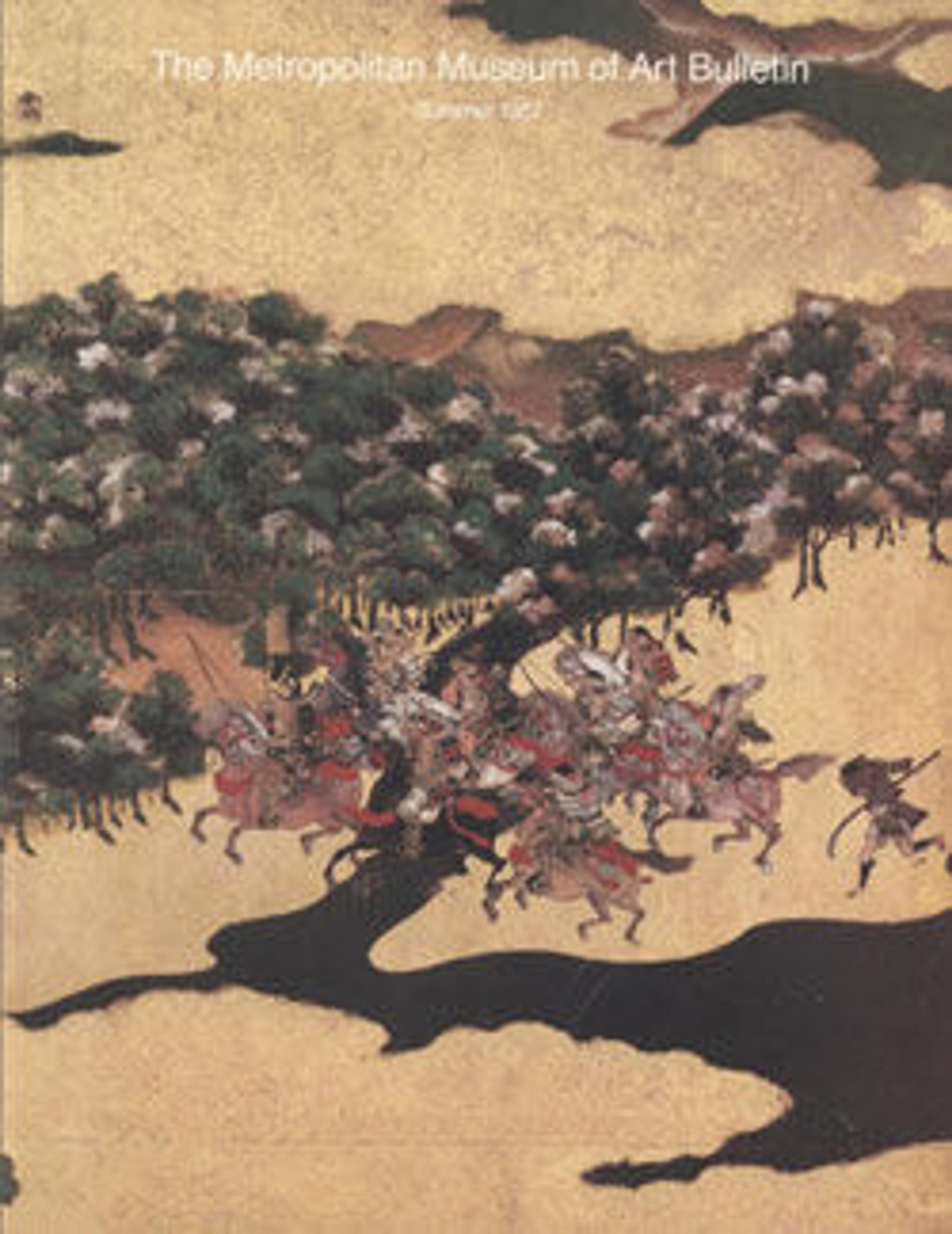One of the Four Heavenly Kings
This pair of statues (with 1975.258.164), which flank the Cosmic Buddha Dainichi Nyorai, are from a set of four, each representing one of the cardinal directions. Originally Hindu demigods, the Four Heavenly Kings, or Shitennō, were absorbed into the Buddhist pantheon as protectors of Buddhist teachings, the temple, and the nation. In China, such statues were usually positioned near temple entrances, but in Japan they more often surrounded the central deity on the main altar. These ferocious figures nearly always wear armor, carry weapons or other attributes (now lost), and stand in dynamic poses rather than static postures of ease or meditation. Each carved from a single block of wood, their muscular forms retain the strength of early Heian-period style. Only the arms, now missing, were carved separately.
Artwork Details
- 四天王像の内 (Shitennō zō)
- Title: One of the Four Heavenly Kings
- Period: Heian period (794–1185)
- Date: 12th century
- Culture: Japan
- Medium: Wood with traces of color
- Dimensions: Overall (figure): H. 33 7/8 in. (86 cm); W. 11 1/2 in. (29.2 cm); D. 87/8 in. (22.5 cm)
- Classification: Sculpture
- Credit Line: The Harry G. C. Packard Collection of Asian Art, Gift of Harry G. C. Packard, and Purchase, Fletcher, Rogers, Harris Brisbane Dick, and Louis V. Bell Funds, Joseph Pulitzer Bequest, and The Annenberg Fund Inc. Gift, 1975
- Object Number: 1975.268.165
- Curatorial Department: Asian Art
More Artwork
Research Resources
The Met provides unparalleled resources for research and welcomes an international community of students and scholars. The Met's Open Access API is where creators and researchers can connect to the The Met collection. Open Access data and public domain images are available for unrestricted commercial and noncommercial use without permission or fee.
To request images under copyright and other restrictions, please use this Image Request form.
Feedback
We continue to research and examine historical and cultural context for objects in The Met collection. If you have comments or questions about this object record, please contact us using the form below. The Museum looks forward to receiving your comments.
